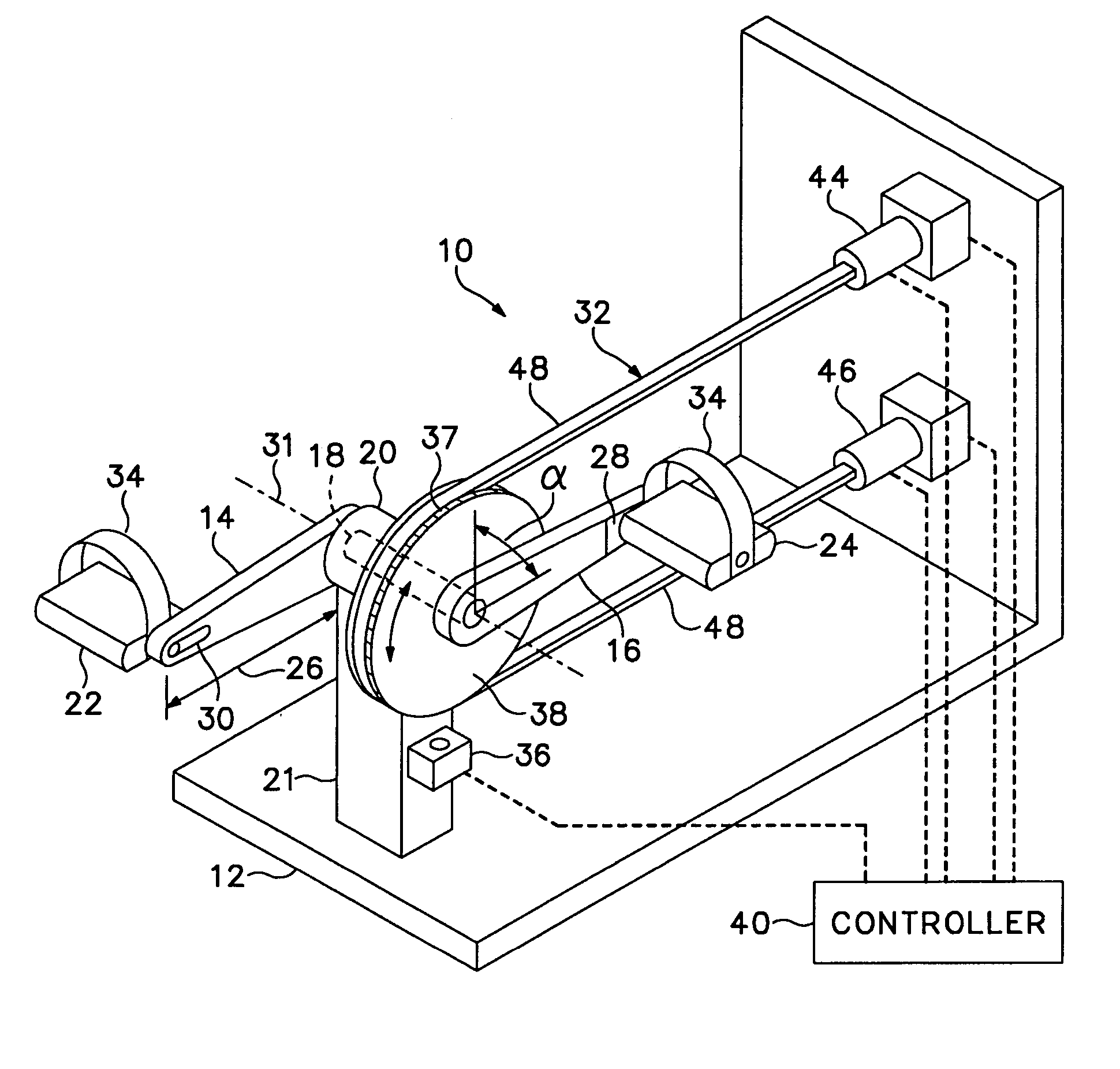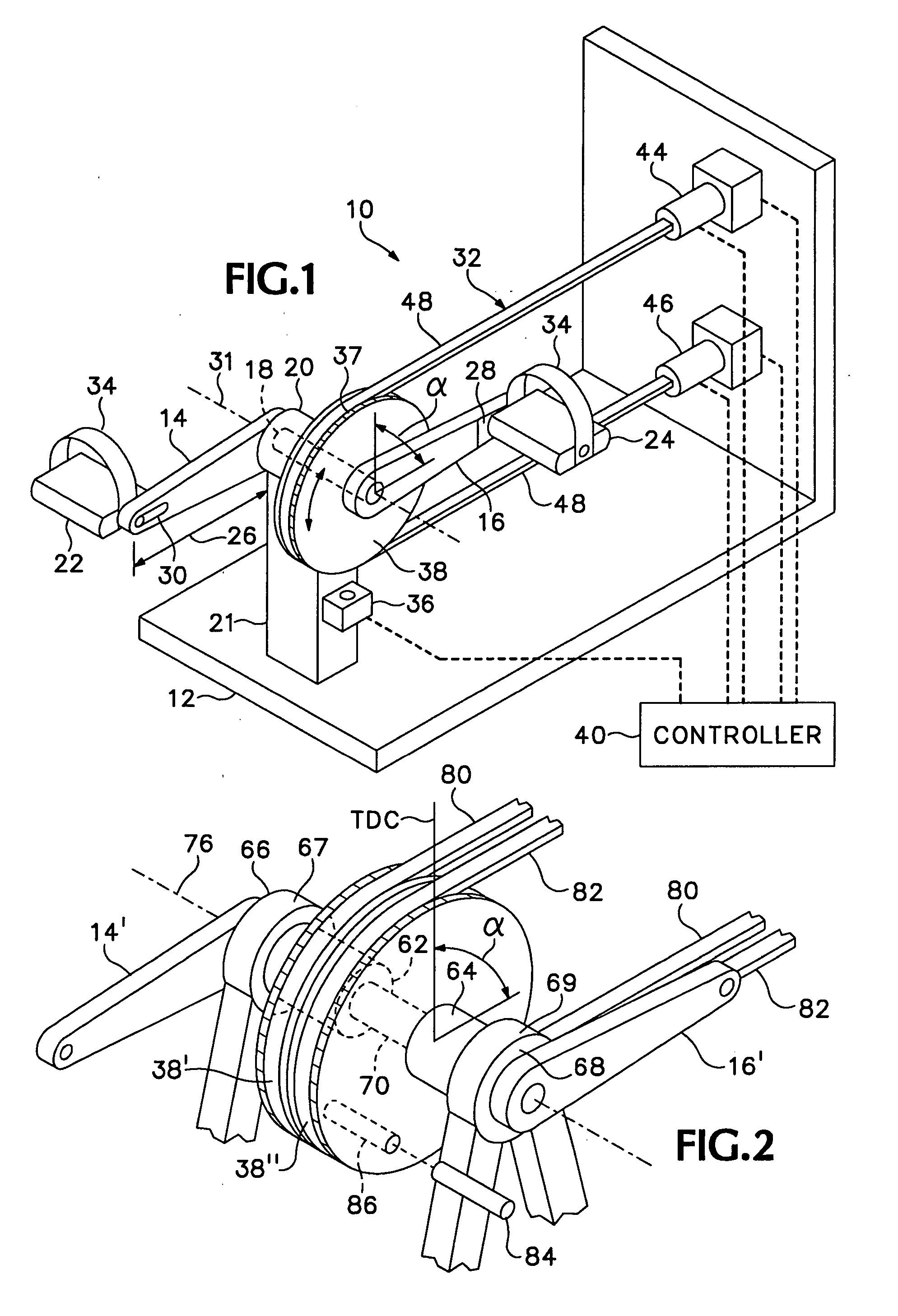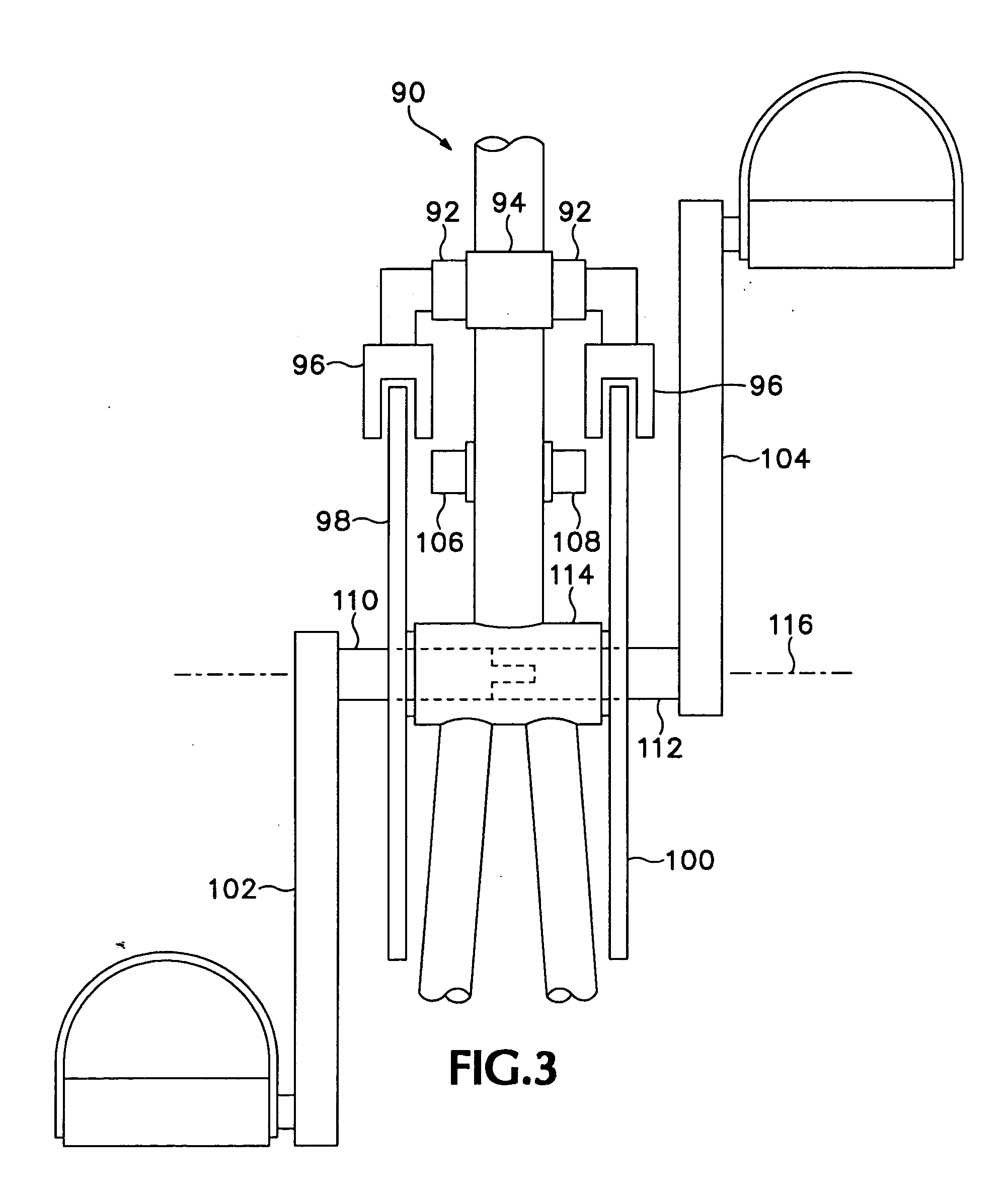Exercise machine and method for use in training selected muscle groups
a technology of exercise machine and muscle group, applied in the field of exercise machines, can solve the problems of inability to train the muscles that need to be trained, flywheel inertia, and inability to provide training
- Summary
- Abstract
- Description
- Claims
- Application Information
AI Technical Summary
Benefits of technology
Problems solved by technology
Method used
Image
Examples
Embodiment Construction
[0030] Referring to the drawings that form a part of the disclosure herein, an exercise apparatus 10 shown in FIG. 1 has a frame 12 on which a pair of cranks 14, 16 are mounted on a crankshaft 18 carried in suitable bearings 20 mounted at the top of the upright support member 21. The cranks 14, 16 carry pedals 22, 24 that may be attached at an adjustable distance 26 from the crankshaft 18, as by being mounted rotatably on a respective mounting plate 28 fastened to the crank 14 or 16 by a suitable fastener extending through a slot 30 defined in the crank.
[0031] Each crank 14, 16 is connected drivingly to the crankshaft 18, so that either of the cranks 14, 16 can independently cause the crankshaft 18 to rotate about an axis 31. An adjustable braking mechanism 32 is mounted on the frame 12 and can be operated quickly and precisely to provide increased or decreased resistance to rotation of the shaft. The braking mechanism can be of any of several types so long as the braking force can...
PUM
 Login to View More
Login to View More Abstract
Description
Claims
Application Information
 Login to View More
Login to View More - R&D
- Intellectual Property
- Life Sciences
- Materials
- Tech Scout
- Unparalleled Data Quality
- Higher Quality Content
- 60% Fewer Hallucinations
Browse by: Latest US Patents, China's latest patents, Technical Efficacy Thesaurus, Application Domain, Technology Topic, Popular Technical Reports.
© 2025 PatSnap. All rights reserved.Legal|Privacy policy|Modern Slavery Act Transparency Statement|Sitemap|About US| Contact US: help@patsnap.com



